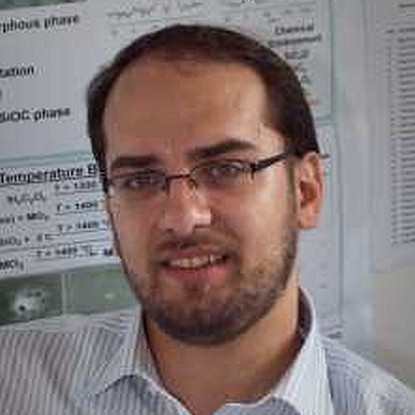Compositionally Complex Ceramics (C³)
Funding: Heisenberg Program of the German Science Foundation (DFG)
Funding Period: 2019 – 2024
more informationen:
“Exploring the complexity of high-entropy ceramics”, Research Features, DOI: 10.26904/RF-138-1787611554
Whereas multicomponent equiatomic metallic alloys (also-called high-entropy alloys) are known and have been intensively studied since the beginning of the 2000s, non-metallic inorganic compounds are relatively unknown and scarcely investigated. Thus, while the concept of entropic stabilization in multicomponent oxidic systems was introduced and discussed already in the 60s of the last century, only recently several studies were published on their rational synthesis and on structural and functional properties thereof. More recently, two studies related to the synthesis and high-temperature oxidation behavior of multicomponent equiatomic metal diborides were reported. Besides recent studies related to the preparative access to multicomponent equiatomic carbide- and boride-based materials, there has been less information available in the literature on the synthesis and properties of non-oxidic entropy-stabilized inorganic materials such as nitrides or carbonitrides.
The C3 activities address fundamental aspects related to the preparative access to multicomponent equiatomic nitrides and carbonitrides as well as to the assessment of selected structural and functional properties thereof (see Figure below).
Thus, the relatively unexplored class of non-oxidic compositionally complex ceramics, i.e., metal nitrides, metal carbides and metal carbonitrides, will be envisaged. The work considers fundamental aspects related to the preparative access to those materials as well as the assessment of their selected structural and functional properties.
Following main C3 research objectives have been defined:
- Develop optimized and reliable synthetic protocols towards compositionally complex metal nitrides, metal carbides and metal carbonitrides – here, molecular preparative routes have been in the focus of the research.
- Perform extensive structural characterization of the prepared materials – one question to answer here has been whether there is an entropic stabilization in compositionally complex non-oxidic ceramics and how this can be experimentally assessed.
- Study selected structural and functional properties of multicomponent equiatomic non-oxidic ceramics – the scope within this context is to exemplarily show the unique role of the configurational entropy in orthogonally improving (or establishing new) physico-chemical properties of non-oxidic ceramics; e.g., tuning properties dictated by the high-entropy metallic sublattice while keeping those carried by the ordered sublattice unaffected/unchanged (and vice versa).
Collaborations
- Prof. Hans-Joachim Kleebe, Geomaterialwissenschaften, TU Darmstadt
- Prof. Ravi Kumar NV, Metallurgical and Materials Engineering, IIT Madras
- Prof. Sanjay Mathur, Inorganic and materials Chemistry, Universität zu Köln
- Prof. Branko Matović, Vinča Institute of Nuclear Sciences, University of Belgrade
- Prof. Hari Kumar, , Metallurgical and Materials Engineering, IIT Madras
- Dr. Maren Lepple, DECHEMA Forschungsinstitut
Projects
- “Single-source-precursor synthesis and structural characterization of compositionally complex carbides and carbonitrides”, Ms. Bindu Madhavi Jella – Master Thesis (DAAD) in cooperation with IIT Madras
- “Precursor-Derived Ultrahigh Temperature Ceramics for Use in Ultraharsh Environments”, Mr. Aasir Rashid Bhat – Master Thesis
- “Single-Source-Precursor Synthesis of Ruddlesden-Popper-Type Metal Oxides and Oxynitrides”, Ms. Maryam Tahir – Master Thesis
- “Ultrahigh-Temperature Ceramics (UHTCs) with Highly Entropic Sublattices”, Ms. Li Wang – Master Thesis
- “Solvent-Deficient Synthesis of Novel Compositionally Complex AMN2-Type Layered Nitrides”, Mr. Po-Yu Yang – Master Thesis







